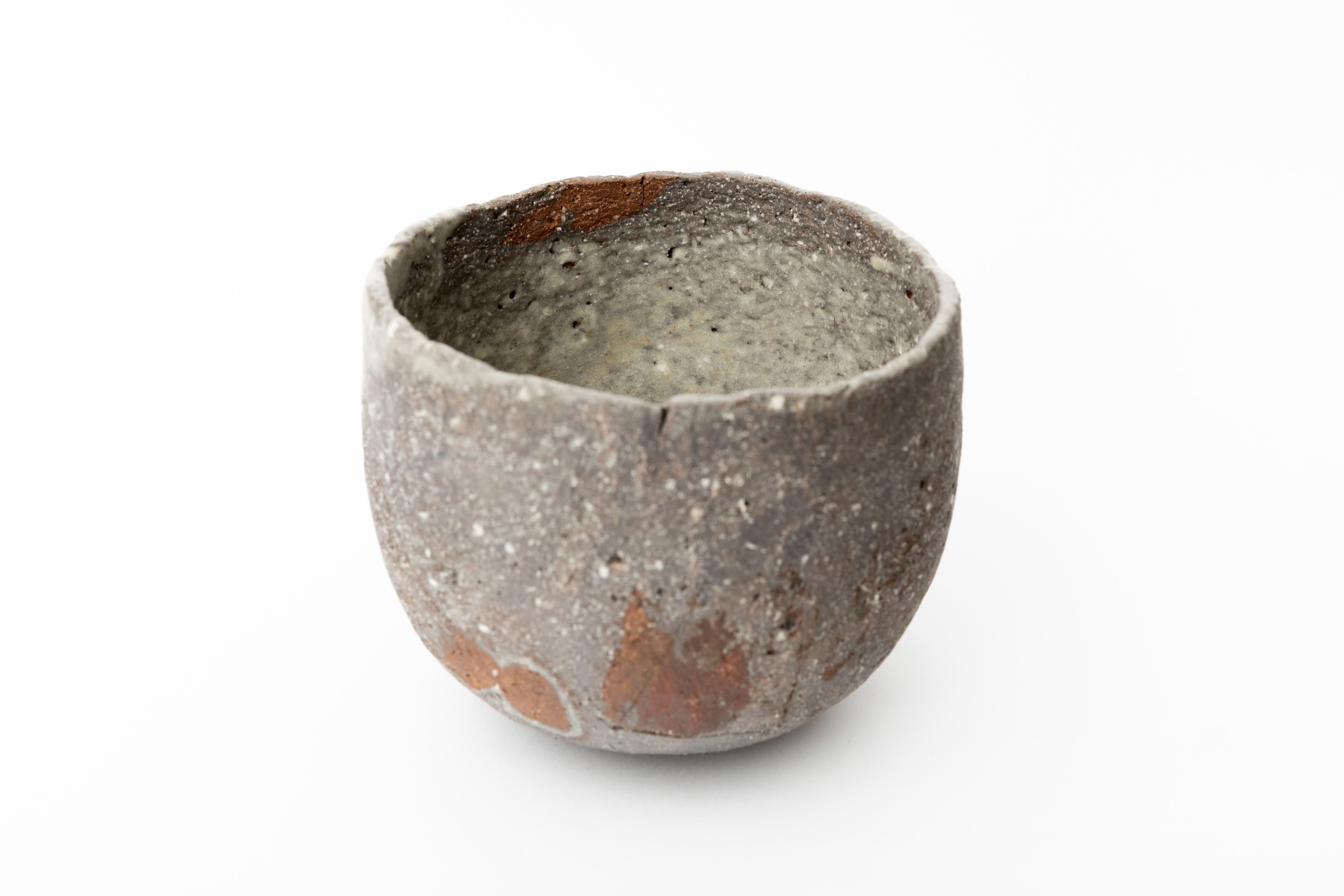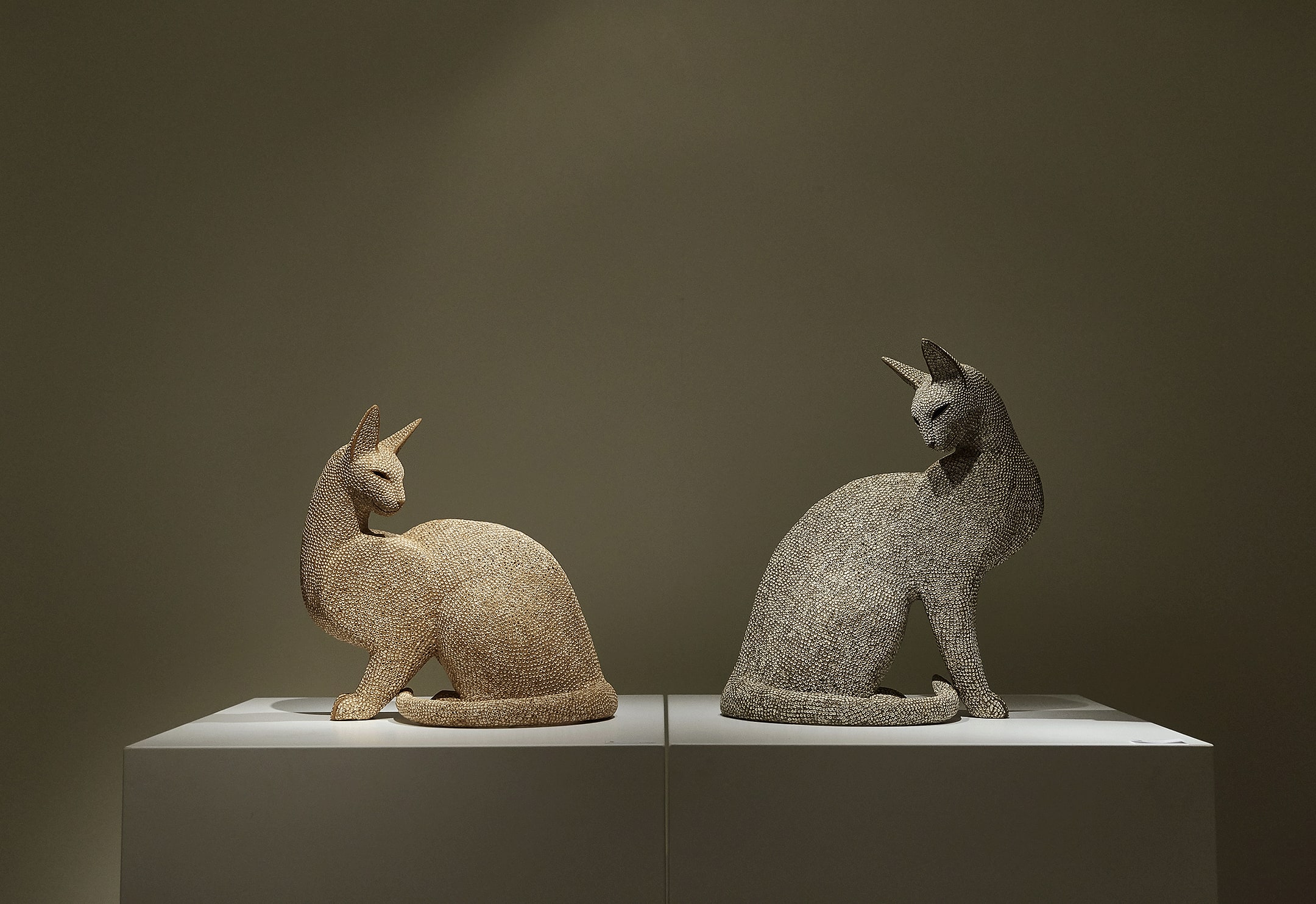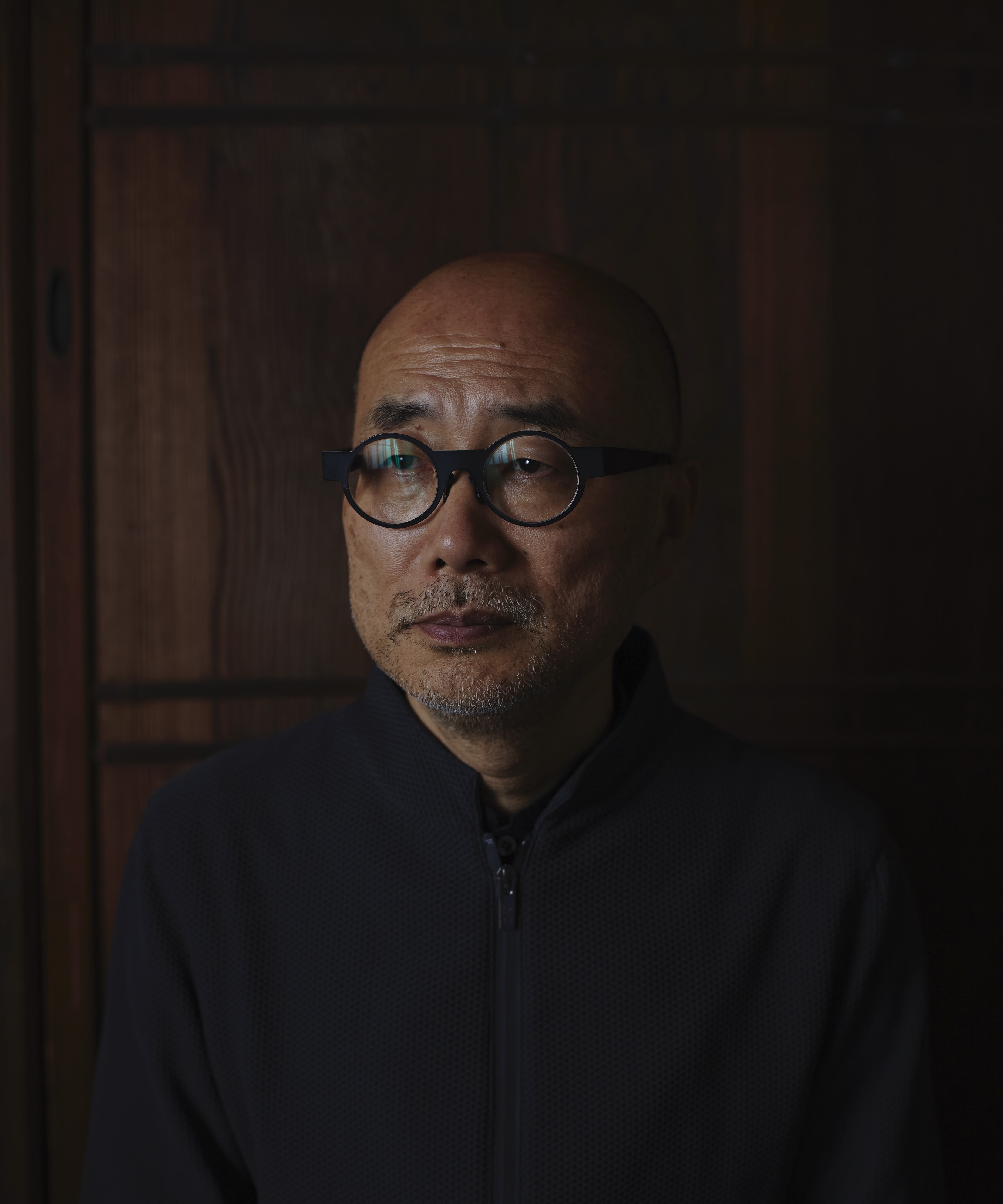
Mokichi Otsuka studied sculpture in Italy which strongly influenced his view of the tea bowl. Working in Italy still today, Otsuka introduces abstract painterly effects that transform the chawan into a picturesque scene. Currently crafting his ceramics in Faenza, the pottery capital of Italy, his chawan are a fusion of German clay fired in an electric kiln with Japanese glaze.

Question 1:
Do you practice tea in daily life? Please share your chanoyu routine, or a beloved memory of chanoyu.
Otsuka:
I enjoy having matcha here in Italy. However, at times, I am sometimes exhausted by the contrast in this country, between Russia and Ukraine, and I often hear disheartening news. In addition, the Italian characteristic is so open-minded compared to the Japanese. Nevertheless, a cup of tea brings me a peaceful and calm moment, regardless of location.
While in Japan, I had a fantastic chajin mentor, my father-in-law, who gave me tremendous insights into creating tea bowls. My father-in-law, a massive fan of Koetsu's creations, shared with me the philosophical meaning of Chawan. Through the sessions with my mentor, I find a lifelong goal for my artwork: to create one that should be a tea bowl but not a tea bowl.

Mokichi Otsuka, Tea Bowl - 茶碗, (C24232)
Q2:
Please describe the influences that inspire your work.
Otsuka:
My biggest inspiration is from the artist Taro Okamoto, that “Artists should create shapes that are not "shapes" and colors that are not "colors." The guidance provided by my father-in-law and Taro’s words shares sure compatibility, which I attach.

From Mokichi Otsuka's exhibiton at Ippodo Gallery New York in 2018.

Mokichi Otsuka, the artist.
Q3:
Please describe the qualities do you most treasure in a tea bowl—be that shape, color, texture, or history, style, and type of clay?
Otsuka:
The importance of creation encaptures in a philosophical term called sublation. It means elevating two conflicting matters to a higher level without merging but integrating them with balance in the broader framework.
Regarding my experience in Italy, especially military affairs, I have seen many opposing phenomena, such as life and death, Good and evil, and love and hatred. These opposites must remain at odds; however, as an artist, I must contemplate and craft the alternatives for the two opposites.

Mokichi Otsuka, Tea Bowl (Grey) - 茶碗, (C20120NP)
Q4:
Please share with us how you prepare to make a new piece; how do you decide on the materials and direction for the idea?
Otsuka:
The initial step and the most significant challenge in creating my artwork is to deliberate how my art piece will appear while aligning with my theory: to create one that should be a tea bowl but not a tea bowl.

